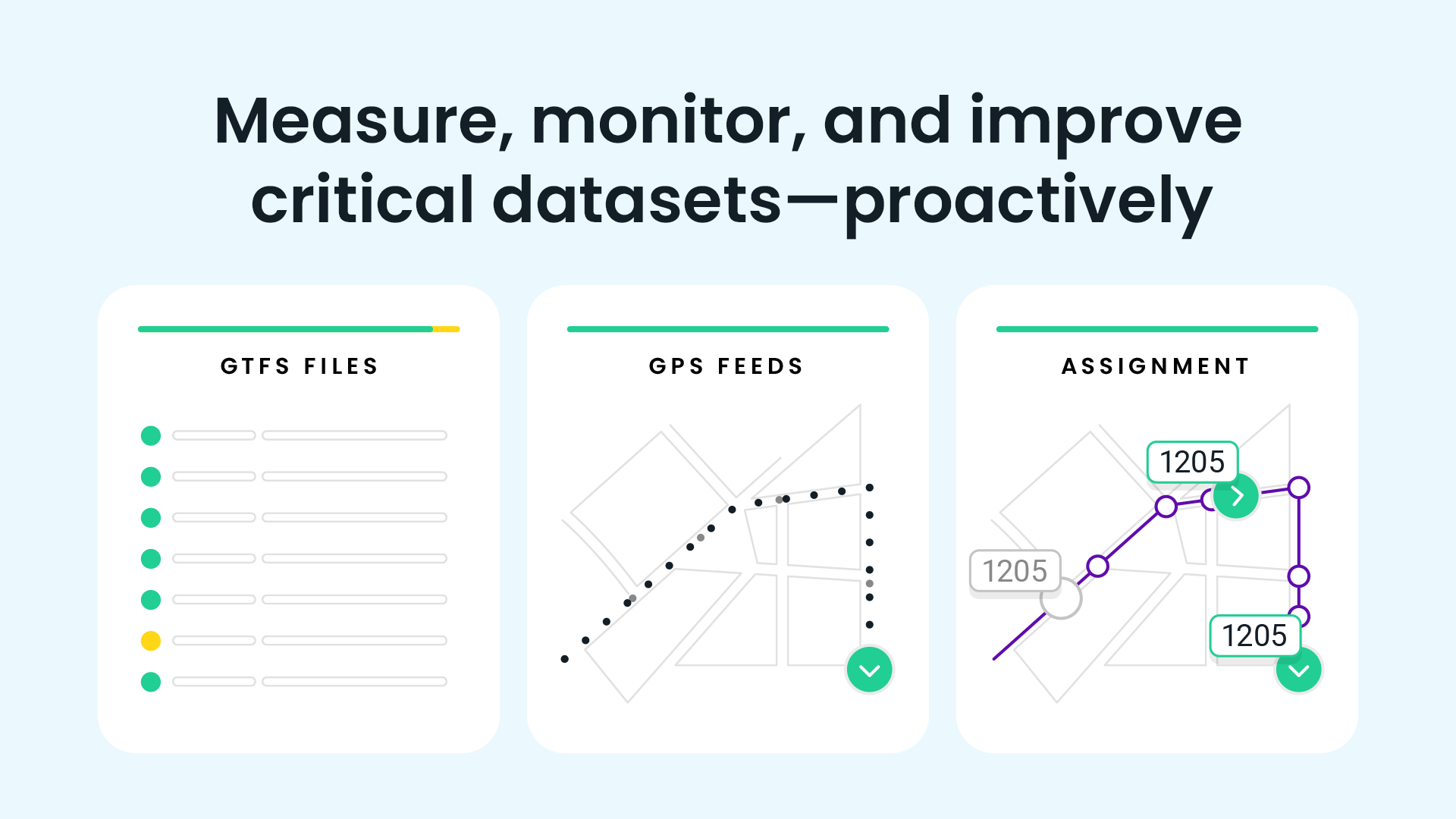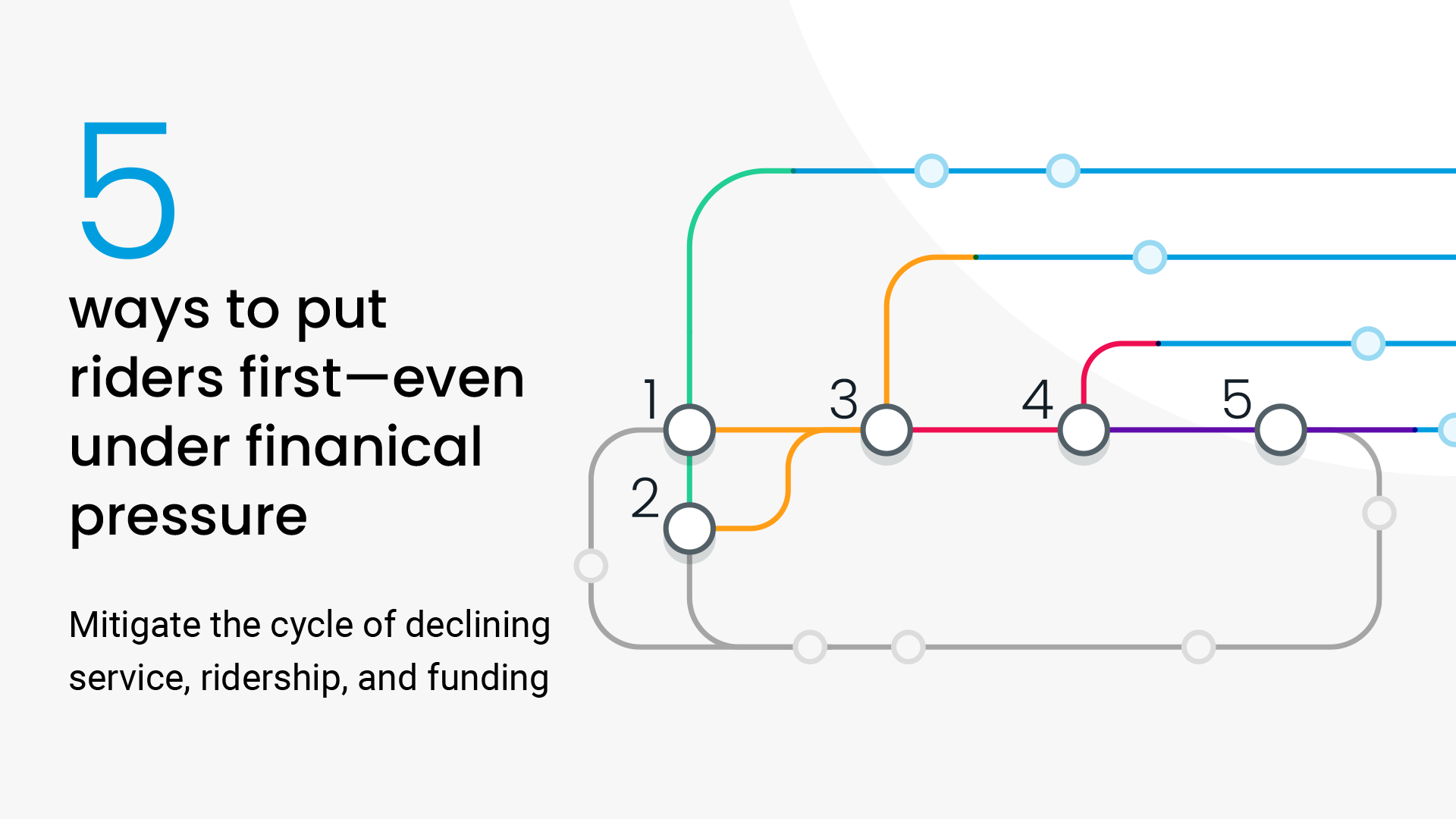
April 4, 2019
How MDOT MTA Overhauled 41 Schedules in Half the Time

April 4, 2019
How MDOT MTA Overhauled 41 Schedules in Half the Time
April 4, 2019
How MDOT MTA Overhauled 41 Schedules in Half the Time
MDOT MTA in Baltimore is leading innovation to improve on-time performance and increase ridership. Their latest undertaking? Better schedules. And not just a handful, they took on 41 for their winter pick.
Michael Helta, Chief Innovation Officer and Tom Hewitt, Director of Service Development from MDOT MTA joined Meredith Bordoni, Head of Product at Swiftly, to share their process and findings in an interactive webinar.
Key takeaways
- How MDOT MTA has done scheduling historically
- Their search for a new methodology
- How they used Swiftly’s Run-times Suggestions View to get more out of their schedule change, in a fraction of the time
- Preliminary results since their recent service change
- 26 routes seeing on-time performance improvements of 5% or more
- Overall on-time performance showing improvement at early stages

MDOT MTA’s search for a new scheduling methodology
In the summer of 2017 MDOT MTA launched a redesign of their entire bus network. Since then MDOT MTA has worked continually to improve the new system, harnessing billions of data points from Swiftly’s insights platform to inform decisions across planning, operations, and customer service.
More recently, the MDOT MTA team turned their attention to scheduling. “The big elephant in the room became how we’re going to continue to improve by looking at our schedules,” Helta says. Over the past few years the team has worked tirelessly to find a scheduling methodology that leverages large sample sizes of high-quality data.

Helta and Hewitt turned to Swiftly. The team in Baltimore saw promise in a data-driven approach, but they weren’t accustomed to using the software for scheduling purposes. “Swiftly was a treasure trove of data, but it was like drinking from a fire hose,” Hewitt says. Swiftly data, while useful for understanding network efficiency overall, had not yet been organized specifically for creating new schedules.
That’s when Bordoni stepped in. She and the product team had heard about MDOT MTA’s scheduling project and saw an opportunity for Swiftly to help optimize schedules using real-world observations, not just in Baltimore, but for transit riders around the world.
“Things that used to take a few months now took just a few clicks. Now we were able to look at routes and see the impact of that potential schedule change instantly.”
Using insights from the MDOT MTA team, the Swiftly team got to work. They built a new feature, called Suggested Run-Times, that could significantly streamline the scheduling process. Suggested Run-Times uses millions of data points — from the trips vehicles actually make — to instantly point out where schedules have too much or too little slack, showing ideal stop-to-stop and timepoint-to-timepoint run-times, down to the second.

MDOT MTA received access to the new tool, and they immediately saw the value. “It allowed us to improve on our reliability much quicker because that analysis component wasn’t there,” Hewitt says. “Things that used to take a few months now took just a few clicks. Now we were able to look at routes and see the impact of that potential schedule change instantly.”
MDOT MTA sees OTP improvements soon after service change
For their most recent winter pick, MDOT MTA scheduled 41 routes, many times greater than the 5–10 they could tackle previously, with a very good understanding of the quantifiable positive impact the changes would have.
The new schedule went live in the beginning of February, and while it’s still early, MDOT MTA has seen promise:
- OTP improved by 5% or more for 26 routes
- OTP is now consistently in the low 70s, a significant improvement, especially in the first few weeks of a new schedule
- Reduced passenger complaints about OTP on social media
- Increased positive feedback from operators
“With the new schedule overhaul, the amount of improvement we’ve seen gives a lot of hope for future things we can do as an agency on the on-time performance front. It shows the power of what data can do,” Hewitt shared.
Beyond the schedule, Swiftly is enabling new collaboration
Swiftly lets Hewitt and his team work their scheduling magic without getting bogged down in the analysis. “Scheduling is both an art and a science,” Hewitt explains. “Suggested Run-times cuts down the amount of analysis we need to do for the actual run-time, so we can look at other factors now, like layovers and deadheads.”
“We are shifting from anecdotes to data-driven decision-making and increased understanding. It’s making us a more inquisitive agency, which leads to better discussions and a stronger end results for our customers.”
Swiftly enables stakeholders from across the agency to engage with the schedule, identify issues they see on the ground, and have an informed conversation that’s rooted in the same data. “Now we can collaborate with operators and look at the longer-term trends. It’s easy to see if we really need to add time here, or maybe we don’t,” Helta says.
Scheduling is one piece of the puzzle that MDOT MTA and Swiftly are tackling together. Helta sees it as a continuation of an ongoing relationship: “We’ve been able to get 8 or 10 departments across the agency to use Swiftly,” he says. “We are shifting the agency culture to understand data. We are shifting from anecdotes to data-driven decision-making and increased understanding. It’s making us a more inquisitive agency, which leads to better discussions and a stronger end results for our customers.”
Interested in learning about how Swiftly can help improve the schedules in your city? Schedule a demo with the team. Watch the full panel discussion.
Request a demo
The rich text element allows you to create and format headings, paragraphs, blockquotes, images, and video all in one place instead of having to add and format them individually. Just double-click and easily create content.
Last Name, Agency

What’s a Rich Text element?
What’s a Rich Text element?
What’s a Rich Text element?
What’s a Rich Text element?
What’s a Rich Text element?
The rich text element allows you to create and format headings, paragraphs, blockquotes, images, and video all in one place instead of having to add and format them individually. Just double-click and easily create content.
Last Name, Agency
Static and dynamic content editing
A rich text element can be used with static or dynamic content. For static content, just drop it into any page and begin editing. For dynamic content, add a rich text field to any collection and then connect a rich text element to that field in the settings panel. Voila!
How to customize formatting for each rich text
Headings, paragraphs, blockquotes, figures, images, and figure captions can all be styled after a class is added to the rich text element using the "When inside of" nested selector system.
- text goes here
- text goes here
- text goes here
- text goes here
- text goes here
- text goes here









